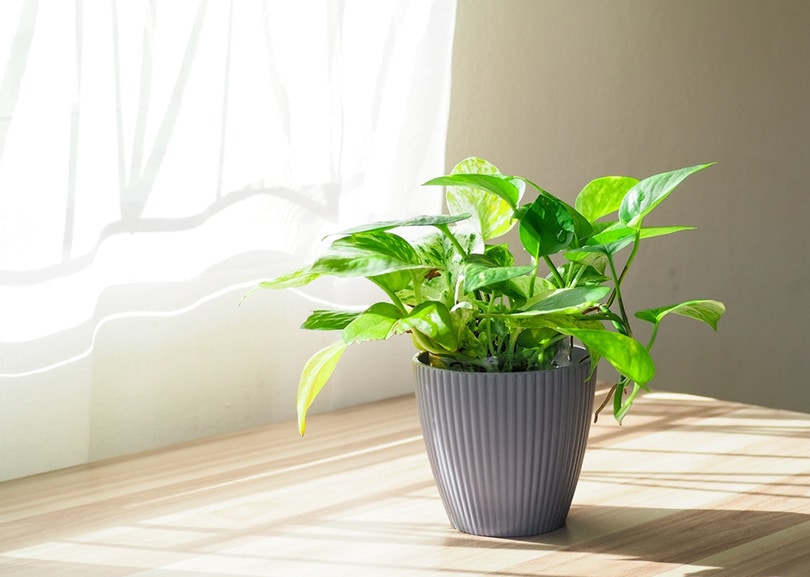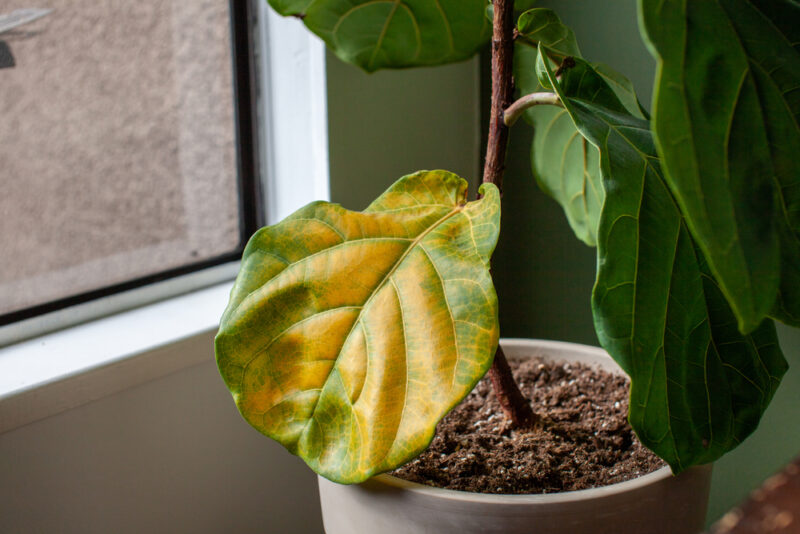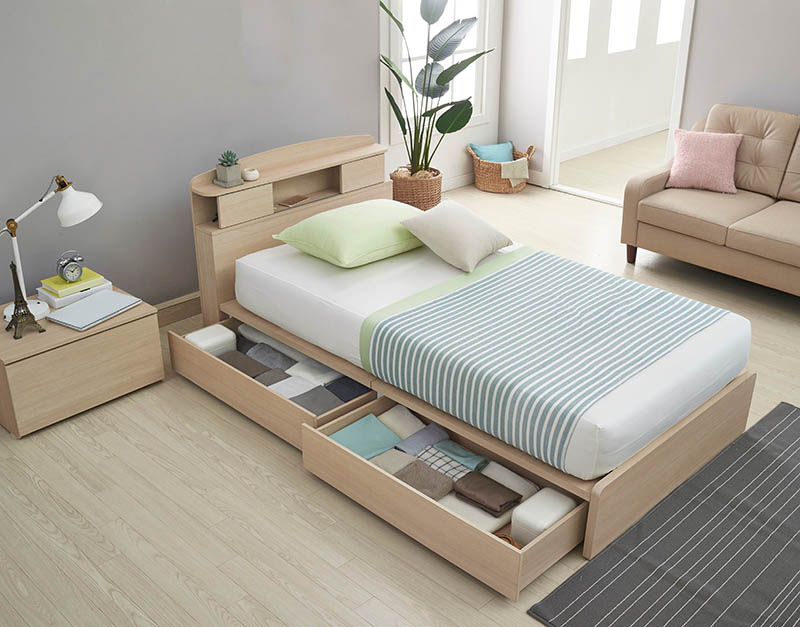8 Common Houseplant Myths & Misconceptions Debunked
-
Visnja Radosavljevic
- Last updated:

There’s just something about houseplants that make your home seem more inviting and aesthetically pleasing. Growing indoor plants is an excellent hobby or activity you can engage in, and you’ll be rewarded with a stunning plant inside your home.
If you never had houseplants, you’re probably looking up everything you need to know about proper houseplant care. While you can find many useful tips online, you can also come across multiple misbeliefs and myths, making your job challenging and keeping you questioning what you should do to keep your houseplant happy.
This article will debunk some of the most common myths and misconceptions about houseplants and provide you with the truth behind these beliefs.
The 8 Most Common Houseplant Myths & Misconceptions
1. Houseplants Grow Bigger in Bigger Pots

For some reason, many people think their houseplant will grow bigger if they plant it in a bigger pot, which is not always the case. Your houseplants need pots of an adequate size that complements the size of the plant; if the pot is too small, your plant won’t be able to develop properly.
Similarly, if the pot is too big, the plant won’t develop as well as it’s supposed to. The thing with bigger pots is they frequently require more soil, leading to the need to water the plant more frequently, which could result in an overwatering issue and lead to root rot.
When choosing an adequate pot for your houseplant, go for a pot that works well for the current size of your plant, and ensure the pot has proper drainage. Of course, the plant will grow bigger over time and could outgrow the current pot, which is when you should repot it into a bigger one.
2. Houseplants are Unsafe for Children and Pets
Many people believe that houseplants are unsafe for children and pets, which is not always true. Of course, some plants are toxic to humans and pets, but this doesn’t apply to all houseplants. If you’re planning on getting a new houseplant for your home but are afraid it might harm your kids or pets, you can look it up online to verify if it’s toxic or not.
Most houseplants are typically harmless, so you can keep them in your home without worrying about your little ones or fuzzy companions. In case you decide to grow a houseplant that’s indeed toxic, ensure you keep it out of reach to avoid possible problems.
3. Houseplants Need a Lot of Direct Sunlight

Another common misbelief around houseplants is that they need a lot of direct sunlight to thrive. While this can apply to specific houseplants, it’s not true for all of them. It would be best if you always tried to adjust the light requirements to the actual species of the houseplant you own, as some need more sunlight while others thrive in less.
Before getting a particular houseplant, it’s always good to investigate the environmental conditions it needs so that you can mimic that inside your home. Because each plant has different light requirements, some may benefit from a lot of direct sunlight, while others could burn in the sun.
You should be careful when choosing the proper location for your plant, and you should expose it to enough light but avoid direct sunlight if it’s not something that plant likes.
4. Yellow Leaves on Your Houseplant Indicate Overwatering
You’ve probably heard a saying that whenever your houseplant has yellow leaves, you’re watering it too much. However, while yellow leaves can indicate an overwatering issue, this problem could also suggest something else wrong with your houseplant.
Houseplants can develop yellow leaves due to an array of issues, including:
- Overwatering
- Underwatering
- Pests
- Diseases
- Receiving too much sun
- Not receiving enough sun
If you notice yellow leaves on your houseplant, first investigate the issue without jumping to conclusions. Otherwise, you may treat a specific problem that may not be the problem, to begin with.
5. Houseplants Need Specific Humidity to Thrive

You’ll often hear that houseplants need specific humidity to thrive and that you can’t keep certain tropical houseplants indoors as your home doesn’t have the required humidity. However, this is not really true as houseplants can easily adjust to any level of humidity.
While it’s natural for tropical plants to enjoy high humidity, they can also adapt to the humidity inside any home quite well, so there’s no need to worry about this problem. As long as your home has a regular humidity level, you won’t have any issues keeping any type of houseplant, including various tropical species.]
6. Houseplants Are Pricey
People frequently say that houseplants are pricey, which is why they don’t keep them in their homes. There are indeed houseplants that can be expensive, but that’s not the case with all houseplants.
There are thousands of houseplant species, so while some can be costly, others can cost just a few bucks. It all comes down to which houseplant you’re planning on buying, but overall, there’s a houseplant for everyone’s pocket, and growing a houseplant won’t break your budget.
7. It’s Not Healthy to Keep Houseplants in the Bedroom

People will often steer away from keeping houseplants in their bedrooms due to a belief that it’s not healthy as plants release carbon dioxide during the night. While it’s true that plants release oxygen during the day and carbon dioxide at night, the amount of carbon dioxide a houseplant can release is almost unnoticeable.
Keeping a houseplant in your bedroom won’t affect your health, meaning it’s totally safe to keep houseplants in your bedroom if that’s something you’d like.
8. Houseplants Need Watering Once a Week
Many people who grow houseplants will tell you that you should water your houseplant once a week. However, this is not something you should do so quickly. While some plants need watering every week, others might need less water.
If you’re unsure how frequently you should water your houseplant, you can make your own watering schedule. Simply start by watering your plant and taking the time to write down how long the soil takes to dry out.
Typically, it’s enough to perform a finger test; place your finger into the soil to check if it’s moist or not. If the top couple of inches is dry, it’s time to water your houseplant. Once you make a watering schedule, you can stick to it without worrying if your plant is getting enough water or if it’s overwatered.
Conclusion
Various myths about houseplants exist—some are true, while others are false.
One of the essential things about houseplants is that every plant is different. That said, all you need to do is follow the development of your plant and provide it with the needed care and love to thrive. Remember that not everything you hear or read is true, so if you come across a belief about houseplants that sounds a bit strange, investigate more to determine if it’s true or not.
Featured Image Credit: Khaohom Mali, Shutterstock
Contents
